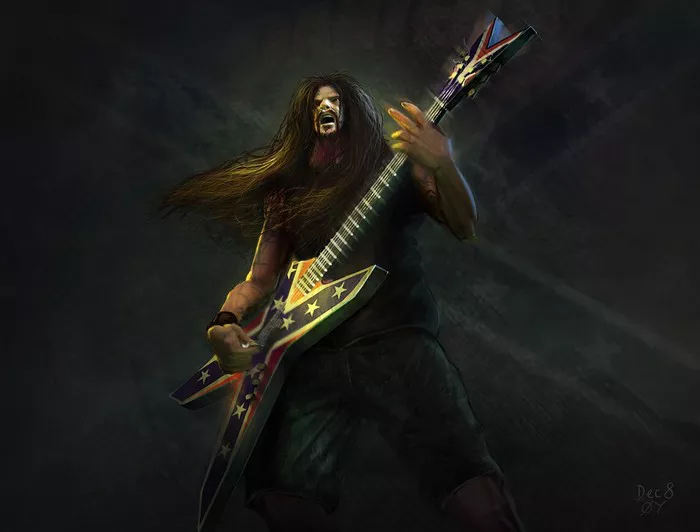Metal music, a genre known for its powerful and aggressive sound, has given rise to numerous subgenres, each with its own distinct characteristics and fan base. Among these subgenres, black metal stands out as one of the most notorious and influential. In this article, we will delve deep into the world of black metal music, exploring its origins, defining features, cultural impact, and evolution over the years.
The Birth of Black Metal
To understand black metal’s unique place within the broader metal music spectrum, we must first explore its origins. Black metal emerged in the early 1980s, primarily in Norway, as a response to the prevailing trends of heavy metal music at the time. While metal music as a whole was known for its powerful guitar riffs and thunderous drumming, black metal sought to take this intensity to new extremes.
Black Metal and Its Musical Characteristics
One of the defining features of black metal music is its sonic landscape. In this subgenre, the use of heavily distorted guitars and blast beat drumming is not only common but celebrated. These elements combine to create a cacophonous wall of sound that engulfs the listener, immersing them in a dark and foreboding atmosphere. Unlike some other forms of metal music, where technical prowess takes center stage, black metal often values raw emotion and atmosphere over virtuosic playing.
Lyrically, black metal often explores themes of darkness, despair, and the occult. The lyrics frequently delve into topics such as mythology, nature, and anti-Christian sentiment. It’s not uncommon for black metal bands to use pseudonyms and obscure their identities, adding an air of mystery and mystique to the genre.
Cultural Controversy and Notoriety
Black metal’s history is riddled with controversy and notoriety, much of which has contributed to its enduring appeal and infamy within the world of metal music. In the early 1990s, a wave of church burnings and violent crimes in Norway was attributed to black metal musicians and fans. These actions shocked the world and brought black metal into the mainstream media spotlight, painting it as a dangerous and extremist subculture.
The Black Metal Aesthetic
In addition to its musical and lyrical components, black metal has a distinctive visual aesthetic. Band members often don corpse paint, a style of makeup that creates a ghostly, skeletal appearance. The combination of corpse paint, dark clothing, and an overall eerie stage presence adds to the genre’s mystique.
The genre’s iconography frequently includes inverted crosses, pentagrams, and other symbols associated with the occult and Satanism. These elements further fueled the controversy surrounding black metal, leading to accusations of blasphemy and devil worship.
Evolution and Subgenres within Black Metal
As with any musical genre, black metal has evolved over the years, giving rise to various subgenres and hybrid styles. One notable subgenre is symphonic black metal, which incorporates orchestral elements such as choirs and strings to create a more grandiose and cinematic sound. Bands like Dimmu Borgir and Emperor are known for their contributions to this subgenre, which adds a layer of complexity to the traditional black metal formula.
Another subgenre is atmospheric black metal, which places a heavy emphasis on creating a specific mood and atmosphere. This often involves the use of ambient textures and extended instrumental passages to transport listeners to otherworldly realms. Bands like Wolves in the Throne Room and Agalloch have garnered acclaim for their contributions to atmospheric black metal.
Global Influence of Black Metal Music
While black metal originated in Norway, its influence has spread worldwide, giving rise to regional variations and unique interpretations. Bands from countries as diverse as France, Greece, and the United States have embraced black metal’s ethos and incorporated their cultural elements into the genre.
In the 21st century, black metal’s influence can be heard in unexpected places, such as film scores and even mainstream music. The genre’s ability to evoke intense emotions and create dark atmospheres has made it a valuable tool for artists seeking to convey a sense of unease or foreboding in their work.
Controversies and Criticisms
Despite its enduring popularity, black metal has not been without its share of criticism and controversy. Some argue that the genre’s association with violence, extremism, and the occult perpetuates harmful stereotypes and can attract individuals with dangerous ideologies. Others critique the genre’s sometimes crude production values, citing them as a barrier to wider appreciation.
Black Metal’s Place in the Metal Music Landscape
Within the broader metal music landscape, black metal occupies a unique niche. While it shares some sonic characteristics with other subgenres like death metal and thrash metal, its emphasis on atmosphere and raw emotion sets it apart. Black metal’s willingness to push boundaries and challenge societal norms has both endeared it to a dedicated fan base and earned it condemnation from critics.
Influence Beyond Music
Black metal’s impact extends beyond the realm of music. It has inspired visual artists, writers, and filmmakers, who draw upon its themes and aesthetics to create their own works of art. The genre’s connection to nature and the mystical also aligns with contemporary movements focused on environmentalism and spirituality.
In literature, black metal’s themes of existential dread and the unknown have found echoes in the works of authors such as H.P. Lovecraft and Thomas Ligotti. These writers explore the cosmic horror and the insignificance of humanity, themes that resonate with black metal’s lyrical content.
Conclusion
In conclusion, black metal is a subgenre of metal music that has carved out a distinct and influential place in the world of music and culture. With its raw intensity, dark themes, and often-controversial history, it continues to captivate and polarize audiences around the globe. While it may not be everyone’s cup of tea, its enduring legacy within the realm of metal music is undeniable. As long as there are musicians willing to embrace its darkness and fans eager to immerse themselves in its atmosphere, black metal will remain a powerful force within the broader landscape of metal music.

